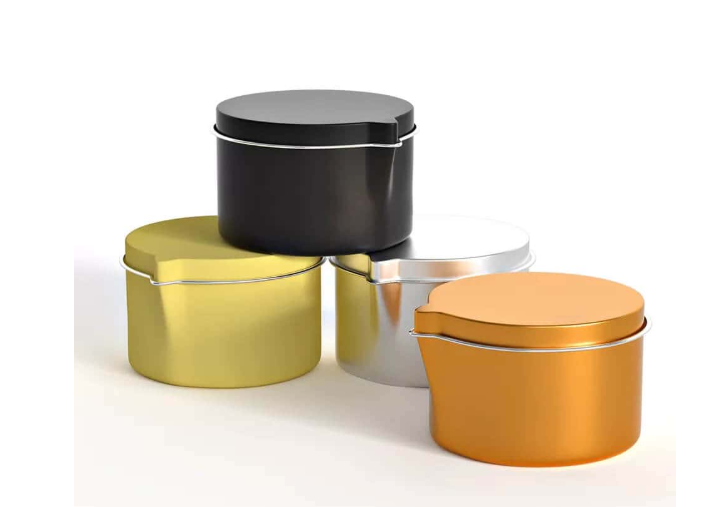Custom tins are a popular packaging solution for various industries, including food, cosmetics, promotional products, and specialty goods. Manufacturers must carefully consider the choice of materials, as each choice affects durability, cost, aesthetics, and functionality. This article explores the pros and cons of different custom can materials, including tinplate, aluminum, stainless steel, and eco-friendly alternatives, to help companies make informed decisions based on their packaging needs.
Tinplate Custom Tins: Classic Durability, but There Are Some Limitations
Tinplate remains one of the most widely used custom-tin materials due to its strength and versatility. Made from steel coated with a thin layer of tin, it offers excellent corrosion resistance and is cost-effective to produce in large quantities. Manufacturers appreciate its ability to retain intricate patterns through printing and embossing, making it ideal for branded packaging.
However, tinplate custom tins are heavier than aluminum, increasing shipping costs. They are also more susceptible to denting if mishandled during shipping. While tinplate is recyclable, its production process has a more significant environmental impact than other alternatives. For products that require lightweight or ultra-high-end packaging, manufacturers may need to explore different materials.
Aluminum custom tins: light and flexible but more expensive
Aluminum custom tins are favored for their lightweight properties and sleek, modern look. They are highly resistant to rust and corrosion, making them ideal for packaging cosmetics, pharmaceuticals, and food products. Aluminum also has excellent ductility, allowing it to be created into unique shapes and designs that stand out on retail shelves.
On the downside, aluminum custom tins are generally more expensive than tinplate, which may concern budget-conscious manufacturers. They are also less rigid, meaning they may lose shape when stacked under heavy loads. While aluminum is 100% recyclable, its production requires a lot of energy, which may not be attractive to some environmentally conscious brands.
Stainless steel is strong but expensive
Stainless steel custom tins offer unparalleled durability and a high-end aesthetic and are often used to hold luxury goods, high-end teas, and specialty products. They are far more resistant to rust, corrosion, and extreme temperatures than tinplate or aluminum, ensuring long-term protection for your product.
The main drawback is cost—stainless steel is the most expensive option, making it less suitable for mass-market products. Additionally, the weight of stainless steel can increase shipping costs, and design options are limited compared to more flexible metals. Manufacturers targeting the high-end market may justify the expense, but cost-conscious manufacturers may prefer other options.
Eco-friendly custom tins: Sustainable, but with drawbacks
As demand for sustainable packaging grows, eco-friendly custom tins made from recycled metals or biodegradable coatings are gaining traction. These options appeal to eco-conscious brands, reducing their carbon footprint while maintaining functionality. Some manufacturers even offer plant-based liners for food-safe applications. What’s the downside? Eco-friendly custom cans are often expensive, and not all recycled materials are as good as virgin metals. Additionally, regional recycling infrastructure may limit the availability of recycled materials. While sustainability is a strong selling point, manufacturers must weigh these factors against budget and performance needs.
Printing and embossing balance aesthetics with cost
Custom cans can enhance brand appeal with printing or embossing. Printed designs can feature full-color, sophisticated graphics, perfect for products focused on marketing, such as limited-edition collectibles or gourmet foods. Conversely, embossing adds a tactile and premium feel, but it is usually more expensive because it requires specialized tooling. Manufacturers must consider the production scale—printing is cost-effective for high-volume production, while embossing is suitable for small-volume, high-end production. Combining the two processes can maximize visual impact, but costs will also increase. The final choice depends on brand positioning and budget constraints.
Choose custom can materials wisely
Custom cans provide manufacturers with durable, beautiful, and functional packaging solutions. Each material—tinplate, aluminum, stainless steel, or an environmentally friendly alternative—has unique advantages and disadvantages. Understanding these differences ensures that companies choose the best option for their specific needs and balances cost, durability, and sustainability.





























